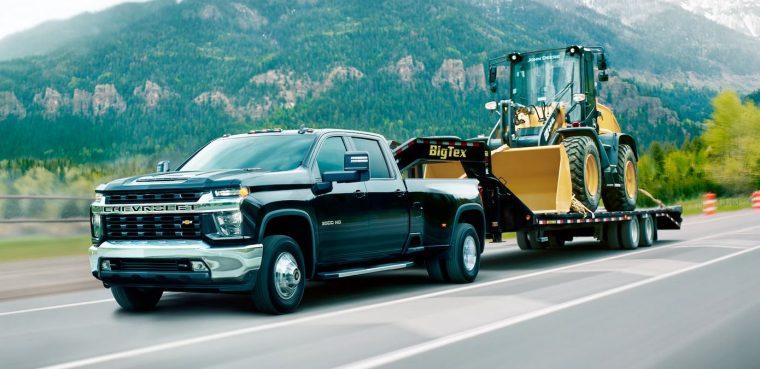A Beginner’s Guide to Dually Trucks

Most of us know dually trucks as broad, brawny behemoths that cut an imposing figure on the road. However, that extra set of rear wheels they’re more than just a stylistic choice for maximum machismo — this modification comes with a set of practical benefits that enhances a truck’s best qualities. Here’s a primer on everything you need to know about dually trucks.
The Perfect Powerhouse: The 2019 GMC Sierra HD
What is a dually?
In the immortal words of rap star 2 Chainz, “Big dually truck got six tires.” That’s a pretty good start, but let’s expand upon it. A dually, officially called a Dual Rear Wheel truck, stands in contrast to the conventional Single Rear Wheel vehicle. DRW trucks have much more pronounced fenders, meant to cover both tires. If the second set of tires went uncovered, it would freely fling road debris back at other drivers, and most likely cause some of that debris to scratch up the dually itself. These broad trucks also have a rear axle with a full floating configuration. This means the axle only transmits the torque without carrying the vehicle’s weight.
Furthermore, DRW trucks are almost exclusively HD models. While it’s technically possible to convert an LD truck to a DRW, it’s not advisable — you’ll need to reprogram the vehicle’s computer and change the rear axle, among other not-so-DIY-friendly changes.
Benefits
With more points of contact on the ground, DRW trucks provide better traction. That extra set of wheels helps you grip the road and mitigates skidding. You’ll really notice this extra traction when your truck’s bed is full. Plus, a wider stance gives the truck greater stability. Dually trucks also give you a layer of insurance — if one rear tire blows out, you’ll still have three others to get you home safely. However, towing strength is the most significant advantage of driving a dually. This extra power makes DRW trucks ideal for towing a 5th wheel.
Consider the difference between a SRW and DRW 2020 Silverado 3500HD:
2020 Silverado 3500HD SRW
- Max payload: 4,302 pounds
- Max towing: 14,500 pounds
- Max gooseneck towing: 21,500 pounds
2020 Silverado 3500HD DRW
- Max payload: 6,517 pounds
- Max towing: 20,000 pounds
- Max gooseneck towing: 35,500 pounds
Maximum Muscle: Shop for 2019 Silverado HD models
Disadvantages
First off, a dually will cost you a bit more than an SRW truck. They’re also more specialized than an SRW model, so you’ll have fewer choices when you’re trying to buy one used. You’ll also pay a more to maintain your dually — they get fewer miles per gallon, and you’ll have to buy two additional tires when it’s time for a tire change. Also, bear in mind that the truck’s wider back end makes it tougher to maneuver in tight spaces or crowded parking lots.
Sources: GM Authority, VeHQ

The News Wheel is a digital auto magazine providing readers with a fresh perspective on the latest car news. We’re located in the heart of America (Dayton, Ohio) and our goal is to deliver an entertaining and informative perspective on what’s trending in the automotive world. See more articles from The News Wheel.

